GSI
![]()
Input
GSI file
Navigate to the location of the .GSI file you want to import. From version 2.20 onwards there are two variants of file format (GSI-8 and GSI-16) with word lengths of 8 and 16 characters respectively. When 16 characters are supported:
- A measurement block is tagged with an * at the first position.
- A data word includes the data at position 7 to 23 instead of at 7 to 15.
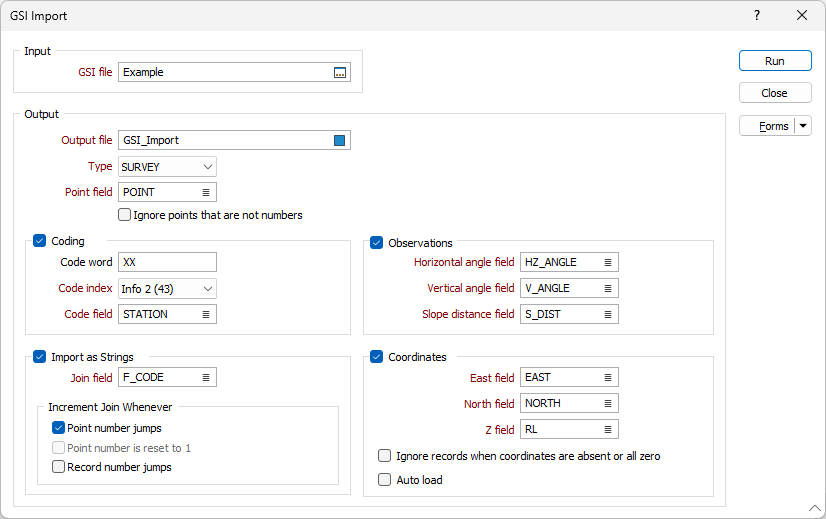
Output
File
Select a (DAT, SVY, or STR) output file type and then enter (or navigate to) the name of the file. If the file does not exist it will be created. If the file exists, but one or more nominated fields do not exist, they will also be created.
Point field
Each measurement block in the file contains a point number and measurement information, which will vary depending on the format which is set on the survey instrument.
Specify the field to which the point numbers will be written.
Ignore points that are not numbers
Pickup point numbers can contain non-numeric characters which are typically station identifiers. It may be necessary to select this option to ignore such records.
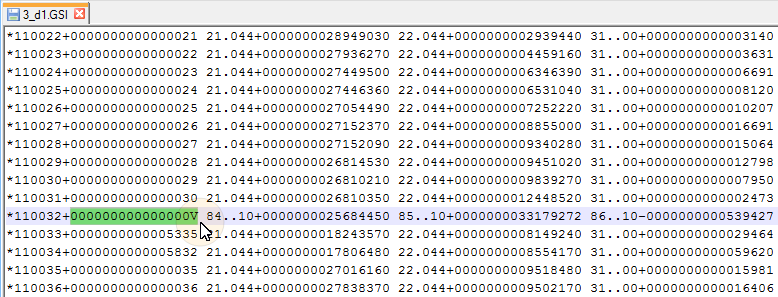
| Word Index | Description |
|---|---|
| 11 | Point number (includes block number) |
| 21 | Horizontal circle (Hz) |
| 22 | Vertical angle (V) |
| 31 | Slope distance |
Coding
Choose which coding information to write to the output file. Code blocks primarily record identification and data processing information, but can also be used to store measurement information such as instruments, target heights and tie distances.
Code word
(Optional) A code block can be between 1 and 8 words. The first word of a Code block is a Code word index (block ID). To only write coding information for code blocks with a particular Code word index, enter the Code word value.
For example, only extract coding information where the Code word index is "41”:
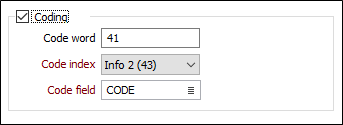
| Word Index | Description |
|---|---|
| 41 | Code number (includes block number) |
| 42 - 49 | Information 1-8 |
Code index
If the Code word input is left blank, the process will write the chosen Code index value to the file irrespective of the Code word that precedes it.
Code field
Specify the field to which the chosen coding information will be written.
Import as strings
Select this option to import the point numbers in the file as strings. You will need to choose how to increment the Join values as the input file is processed:
Point number jumps
Select this option to increment the Join value wherever the point number value jumps (forwards or backwards) by more than 1.
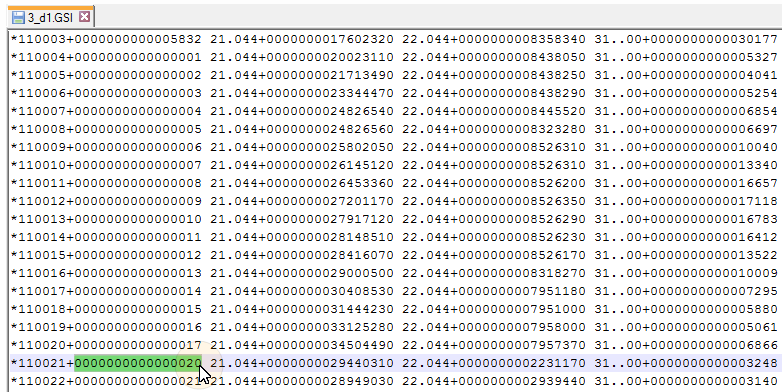
Point number is reset to 1
In some cases the point numbers are reset back to 1 to indicate the start of a new pick-up type. Select this option to only increment the Join value where the point value is equal to 1.
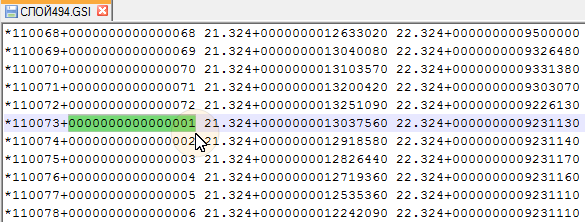
Since a reset is also a jump in point number, this option is disabled when the Point number jumps option is selected (see above).
Record number jumps
Select this option to increment the Join value wherever the Record number jumps by more than an increment of 1.
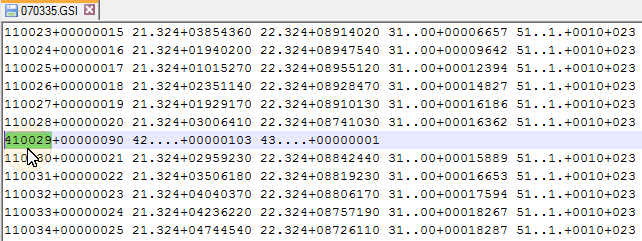
Observations
Select this option to map the observed HORIZONTAL ANGLE, VERTICAL ANGLE and SLOPE DISTANCE values to fields in the output file.

| Word Index | Description |
|---|---|
| 21 | Horizontal circle (Hz) |
| 22 | Vertical angle (V) |
| 31 | Slope distance |
Coordinates
Select this option to map EAST, NORTH and HEIGHT coordinate values to fields in the output file. Records with EAST, NORTH and HEIGHT coordinates that are all zero are ignored.

| Word Index | Description |
|---|---|
| 81 | Easting (target) |
| 82 | Northing (target) |
| 83 | Elevation (target) |
Auto load
If coordinates are written to the file, select this option to load the points and strings you have imported into Vizex.